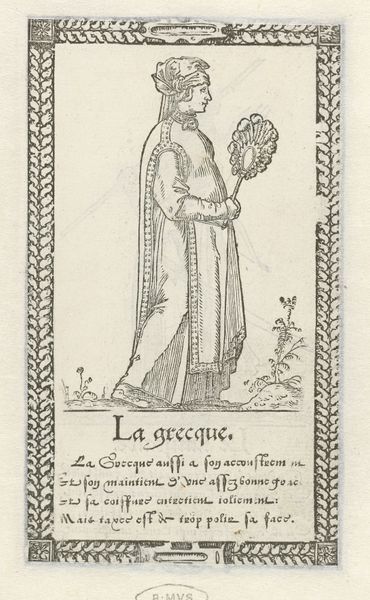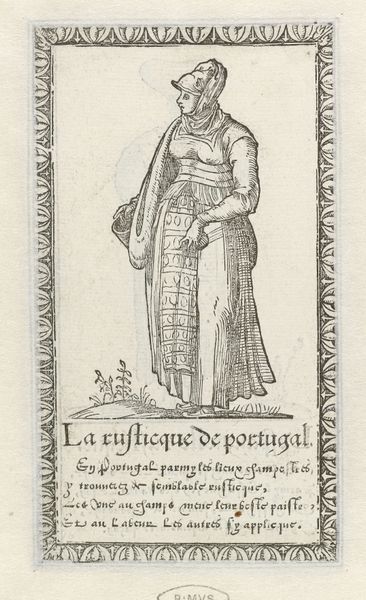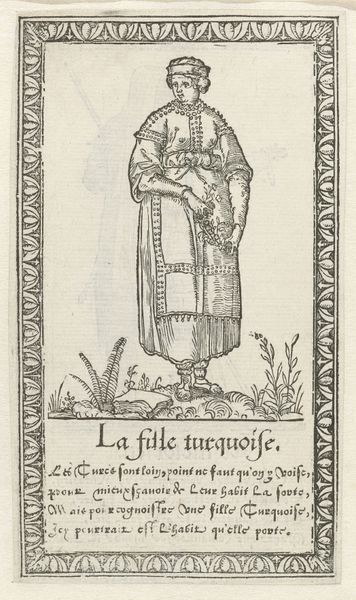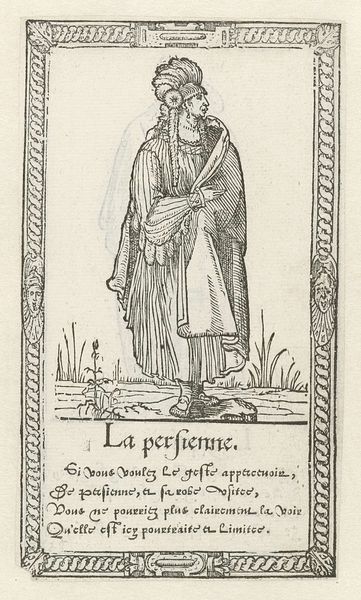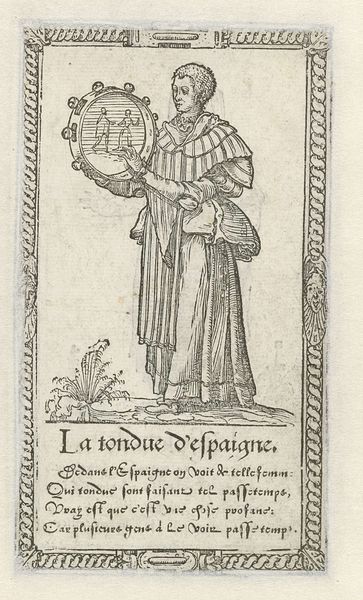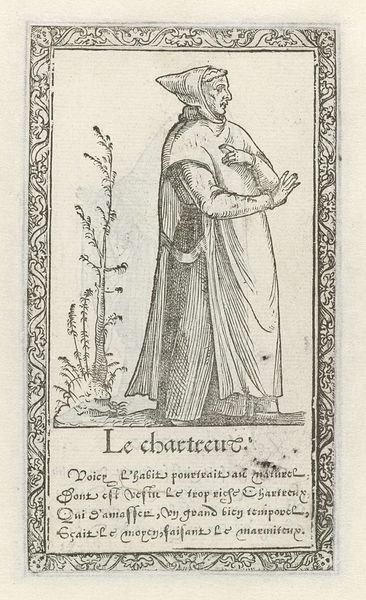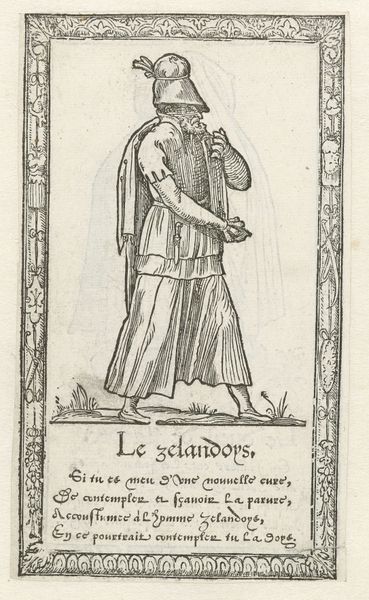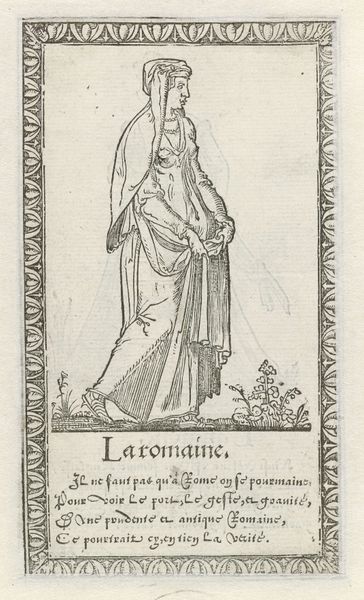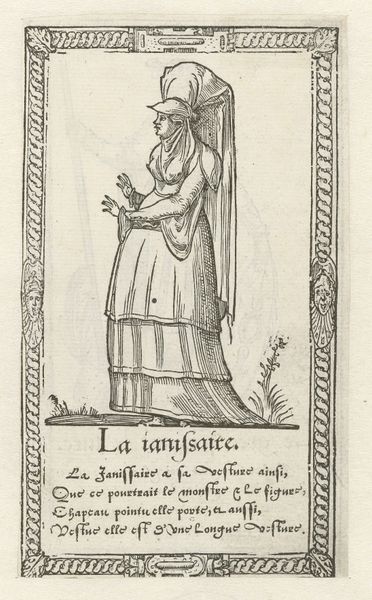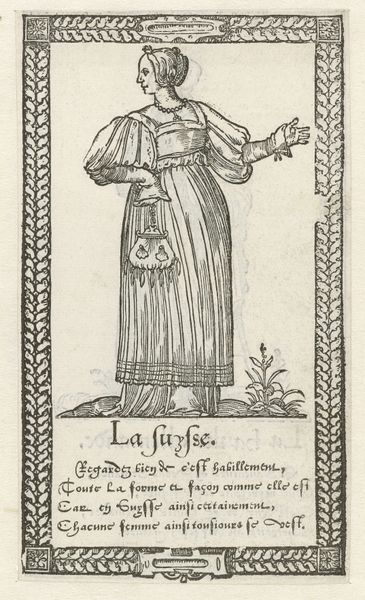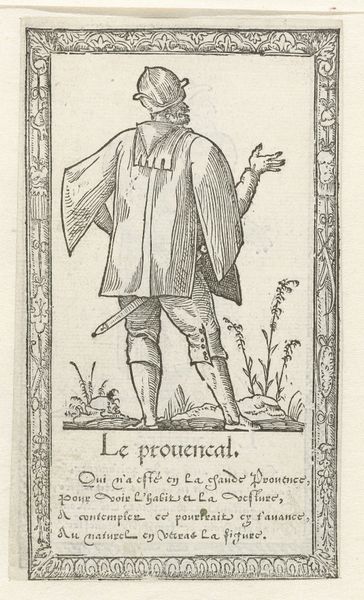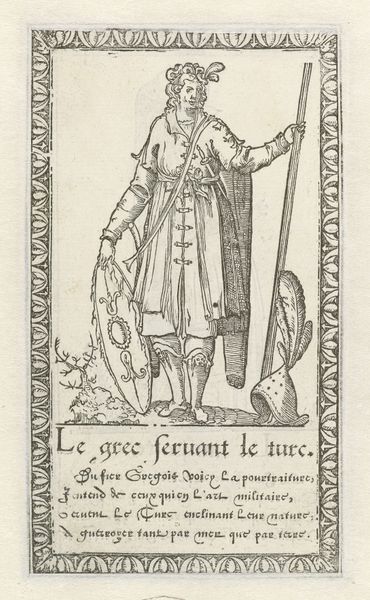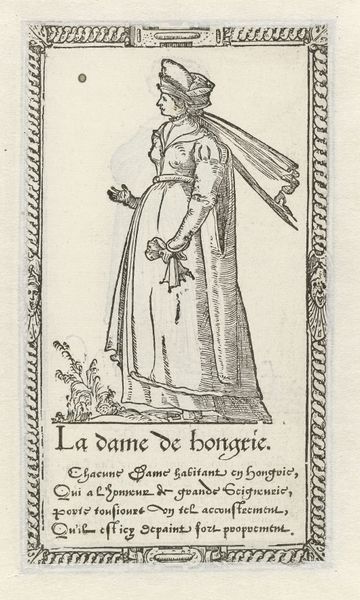
drawing, print, ink, engraving
#
portrait
#
drawing
#
narrative-art
# print
#
figuration
#
ink
#
line
#
northern-renaissance
#
engraving
Dimensions: height 146 mm, width 85 mm
Copyright: Rijks Museum: Open Domain
Curator: Isn't this engraving just magical? Here we have François Desprez’s “Meisje uit Duitsland,” or “Girl from Germany,” created in 1562 using ink. Editor: My initial sense is one of poignant observation, a tender fragility, somehow heightened by the graphic style of engraving. What do you make of the flower she holds, a single lily? Curator: Oh, the lily is key! For centuries, the lily, especially a white lily, symbolized purity, innocence, and even resurrection. In Renaissance art, it’s often associated with the Virgin Mary, embodying hope and grace. Her posture, with one hand offered, almost giving, and the other close to the purse might even signify that she is hoping for a dowry! Editor: Fascinating. So, while ostensibly a portrait, it also conveys societal expectations of young women. The poem below the figure reinforces the symbolism as well. How interesting to consider how visual language blends with written commentary, each amplifying the message. Curator: Right? And consider the engraving technique—precise lines, limited tonal range…it imbues the image with both delicacy and constraint, mirroring the girl's presumed position in her world. Plus, it reminds us that prints circulated widely, distributing this ideal across regions. It’s amazing! Editor: Yes, the wide distribution of such imagery shaped not only aesthetics but societal understanding, influencing behavioral models, like those that girls adopt through their life and actions. But it's such a gentle image, in its execution, in its presentation! Curator: Agreed! This print, despite its seemingly simple subject matter, becomes a fascinating document. It's both intimate portraiture and a reflection of societal constructs of femininity and German identity. I think it asks us to see more than just what is represented at face value. Editor: Exactly. Looking closely uncovers these layered nuances, adding emotional complexity and reminding us about historical depth held within visual culture. It's more than just an image; it's a story waiting to unfold!
Comments
No comments
Be the first to comment and join the conversation on the ultimate creative platform.
